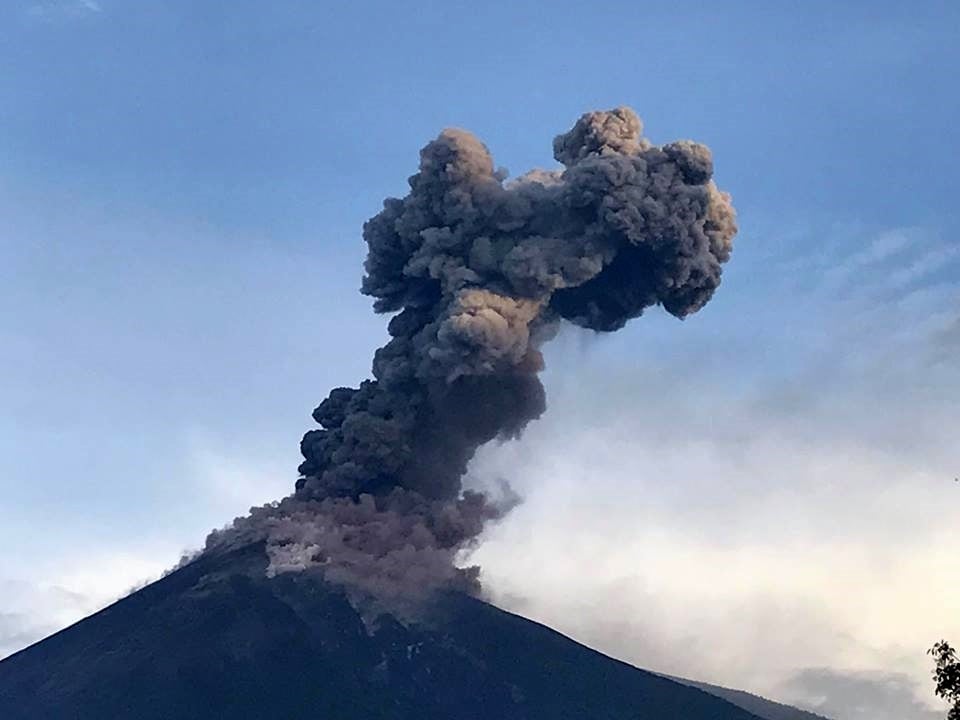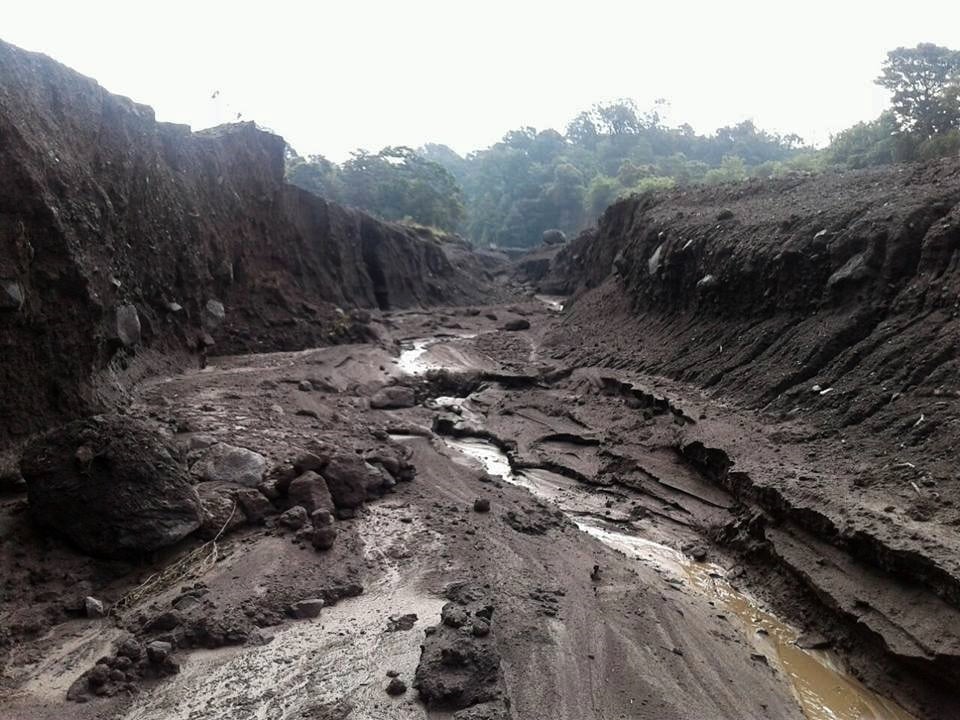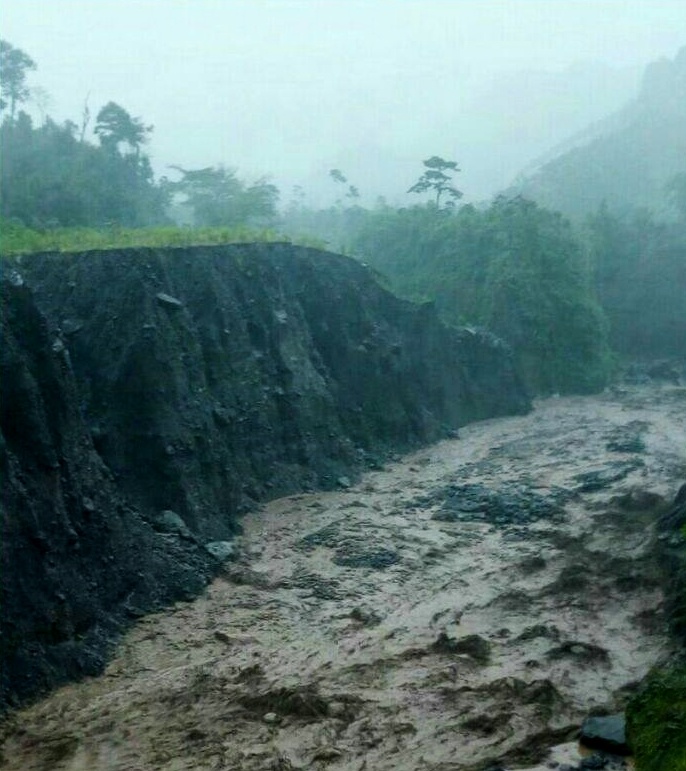On June 8, 2017 the Fuego volcano erupted 23 times, 4 of which really strongly sending ash plumes 4,400-4,500 m. Asl.
The heavy rains falling on Santiaguito and Fuego volcanoes created lahars which disrupted the communiation between communities living close to the volcanoes.
On June 8, 2017, the Volcan de Fuego in Guatemala erupted 23 times (13 small, 6 moderate and 4 strong). According to local observers, the Fuego produced one of the strongest explosion of recent years.
The 4 powerful explosions generated plumes of gray color rising up to 4,400-4,500 m. asl, before dispersing to the west and north.

Incandescent pulses of 150 m. Over the crater caused moderate to strong avalanches in the Santa Teresa, Taniluya, Ceniza and Trinidad barrancas.
Lahars
Due to heavy rains lahars are descending in different ‘barrancas’ along the slope of the Fuego and the Santiaguito volcanoes.

Lahars hit the slopes of the Fuego volcano in the barranca Santa Teresa, dragging 1 to 3 meters in diameter rocks, trunks and complete trees, and in the barrancas Trinidad as well as Cenizas, transporting smaller blocks disrupting intercommunity communications.

Concerning the Santiaguito volcano, lahars carring trunks and blocks measuring 1 to 2 meters in diameter have engulfed the Rio Cabello de Angel, a tributary of the Rio Nima and San Isidro, and the Rio Samala











